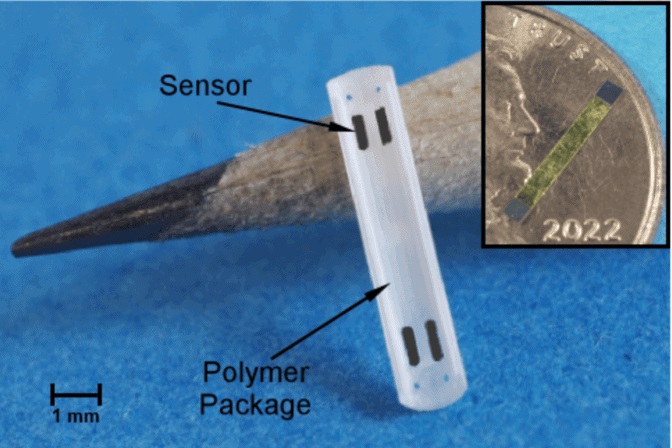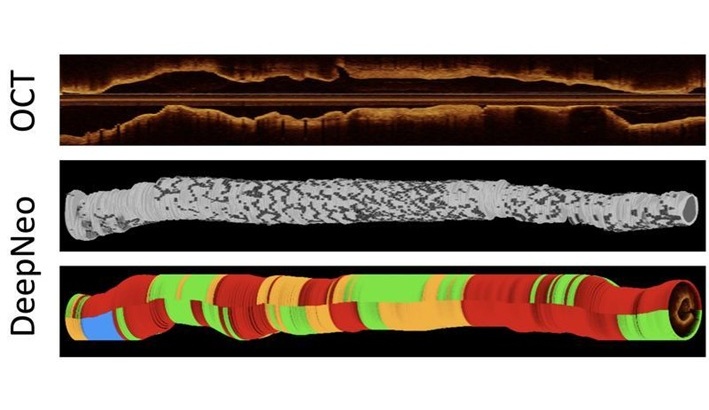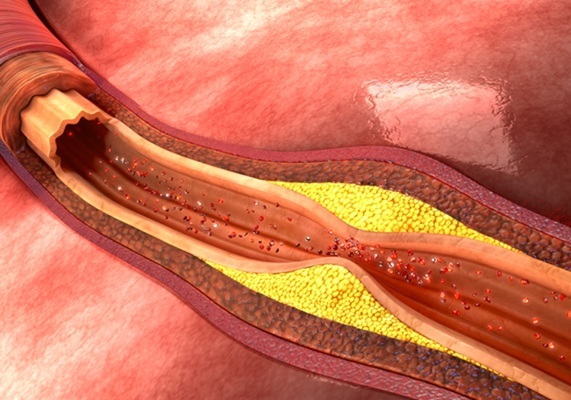Batteryless, Wireless Stent Sensor Warns of Blockages in Bile Duct
|
By HospiMedica International staff writers Posted on 01 Nov 2024 |

Bile duct blockages can lead to jaundice, liver damage, and potentially life-threatening infections. Conditions that result in the narrowing and closure of bile ducts, such as pancreatic and liver cancers, may be treated by inserting stents to keep the ducts open. However, these stents can themselves become obstructed by bacterial sludge or gallstones, requiring urgent treatment with antibiotics and replacement of the stent. Currently, healthcare providers monitor biliary stent blockages using blood tests, which means that the issue must reach a significant level for the body to signal its presence. Researchers have now developed a new sensor for stents used in the bile duct that could help physicians detect and address stent blockages early, thereby improving patient health. This sensor can inform doctors of accumulating bacterial sludge and allow for intervention before the patient shows signs of illness.
Developed by researchers at the University of Michigan (Ann Arbor, MI, USA), the sensor measures 8 millimeters long—approximately half the diameter of a penny—and is 1 millimeter wide. It is housed in a protective, 3D-printed plastic structure that attaches to plastic stents. During a checkup, the patient would wear a belt-like detector around their waist that emits an alternating magnetic field, changing its sign at various frequencies to induce maximum, or resonant, vibration in the sensor. As the sensor vibrates, any masses adding weight to it are indicated by a lowered resonant frequency. One significant challenge was detecting this resonant frequency, which appears as a responding magnetic field emitted by the sensor, even through nearly 7 inches of fluid-rich abdominal tissue. Through careful hardware design and digital signal processing, the team achieved a signal-to-noise ratio of one million to one during their tests.
The design also enhances the communication range while minimizing signal feedthrough, ensuring that the sensor’s signaling and receiving ends do not interfere with each other. This is accomplished through time domain decoupling, where one end is suspended while the other operates and vice versa. Moving forward, the researchers plan to develop a version compatible with metal stents. In the long term, they aim to further miniaturize the sensor, allowing multiple sensors to be distributed along the stent, each with a different resonant frequency. This would facilitate localized detection of sludge buildup. Additionally, the team intends to create more affordable electronics for the belt-like detector, setting the stage for human clinical trials. As this technology evolves, magnetoelastic sensors could also be applied in other areas of the body, including peripheral vascular stents, long-term coronary stents, and ureteral stents.
"This novel stent sensor provides the opportunity to detect impending biliary stent obstructions without waiting for clinical symptoms, blood tests or imaging tests, all of which delay intervention," said Richard Kwon, a clinical professor of internal medicine and gastroenterology at the U-M Medical School and co-author of the study in Nature Microsystems & Nanoengineering.
Latest Surgical Techniques News
- DNA Origami Improves Imaging of Dense Pancreatic Tissue for Cancer Detection and Treatment
- Pioneering Sutureless Coronary Bypass Technology to Eliminate Open-Chest Procedures
- Intravascular Imaging for Guiding Stent Implantation Ensures Safer Stenting Procedures
- World's First AI Surgical Guidance Platform Allows Surgeons to Measure Success in Real-Time
- AI-Generated Synthetic Scarred Hearts Aid Atrial Fibrillation Treatment
- New Class of Bioadhesives to Connect Human Tissues to Long-Term Medical Implants
- New Transcatheter Valve Found Safe and Effective for Treating Aortic Regurgitation
- Minimally Invasive Valve Repair Reduces Hospitalizations in Severe Tricuspid Regurgitation Patients
- Tiny Robotic Tools Powered by Magnetic Fields to Enable Minimally Invasive Brain Surgery
- Magnetic Tweezers Make Robotic Surgery Safer and More Precise
- AI-Powered Surgical Planning Tool Improves Pre-Op Planning
- Novel Sensing System Restores Missing Sense of Touch in Minimally Invasive Surgery
- Headset-Based AR Navigation System Improves EVD Placement
- Higher Electrode Density Improves Epilepsy Surgery by Pinpointing Where Seizures Begin
- Open-Source Tool Optimizes Placement of Visual Brain Implants
- Easy-To-Apply Gel Could Prevent Formation of Post-Surgical Abdominal Adhesions
Channels
Critical Care
view channel
AI Model Analyzes Patient Data to Diagnose Multiple Sclerosis With 90% Accuracy
Multiple sclerosis (MS) is a chronic inflammatory condition affecting the central nervous system. Most patients initially experience the relapsing-remitting form (RRMS), characterized by periods of symptom... Read more
Magnetically Navigable Microparticles Enable Targeted Drug Delivery
Abdominal aortic aneurysms (AAA) can be life-threatening if not treated and result in nearly 10,000 deaths annually. Researchers working to improve treatments for AAA could now make it possible for doctors... Read more
AI-Powered Algorithm Automates Analysis of Coronary Stents After Implantation
Every year, over three million people globally receive stents to open blocked blood vessels caused by heart disease. However, monitoring the healing process after stent implantation remains a significant challenge.... Read morePatient Care
view channel
Portable Biosensor Platform to Reduce Hospital-Acquired Infections
Approximately 4 million patients in the European Union acquire healthcare-associated infections (HAIs) or nosocomial infections each year, with around 37,000 deaths directly resulting from these infections,... Read moreFirst-Of-Its-Kind Portable Germicidal Light Technology Disinfects High-Touch Clinical Surfaces in Seconds
Reducing healthcare-acquired infections (HAIs) remains a pressing issue within global healthcare systems. In the United States alone, 1.7 million patients contract HAIs annually, leading to approximately... Read more
Surgical Capacity Optimization Solution Helps Hospitals Boost OR Utilization
An innovative solution has the capability to transform surgical capacity utilization by targeting the root cause of surgical block time inefficiencies. Fujitsu Limited’s (Tokyo, Japan) Surgical Capacity... Read more
Game-Changing Innovation in Surgical Instrument Sterilization Significantly Improves OR Throughput
A groundbreaking innovation enables hospitals to significantly improve instrument processing time and throughput in operating rooms (ORs) and sterile processing departments. Turbett Surgical, Inc.... Read moreHealth IT
view channel
Printable Molecule-Selective Nanoparticles Enable Mass Production of Wearable Biosensors
The future of medicine is likely to focus on the personalization of healthcare—understanding exactly what an individual requires and delivering the appropriate combination of nutrients, metabolites, and... Read more
Smartwatches Could Detect Congestive Heart Failure
Diagnosing congestive heart failure (CHF) typically requires expensive and time-consuming imaging techniques like echocardiography, also known as cardiac ultrasound. Previously, detecting CHF by analyzing... Read moreBusiness
view channel
Expanded Collaboration to Transform OR Technology Through AI and Automation
The expansion of an existing collaboration between three leading companies aims to develop artificial intelligence (AI)-driven solutions for smart operating rooms with sophisticated monitoring and automation.... Read more
















